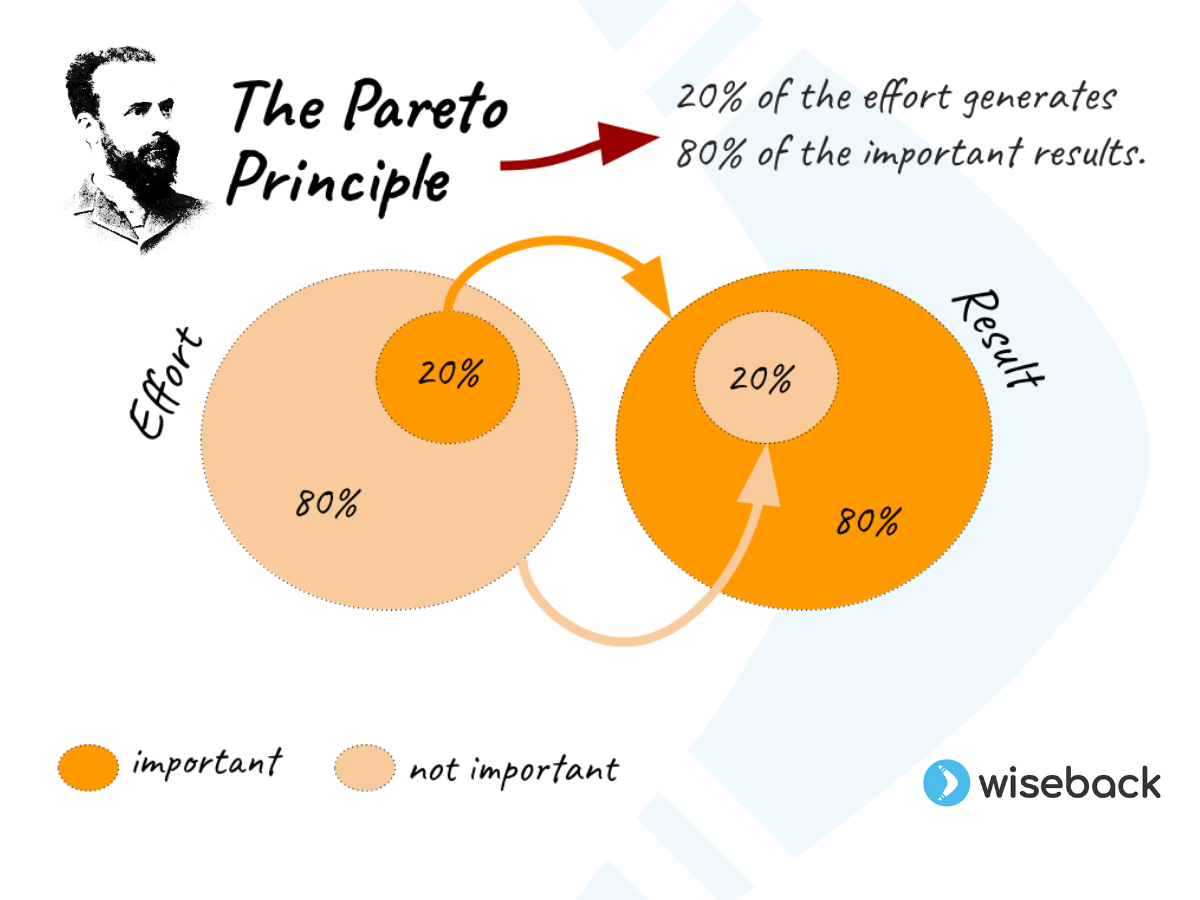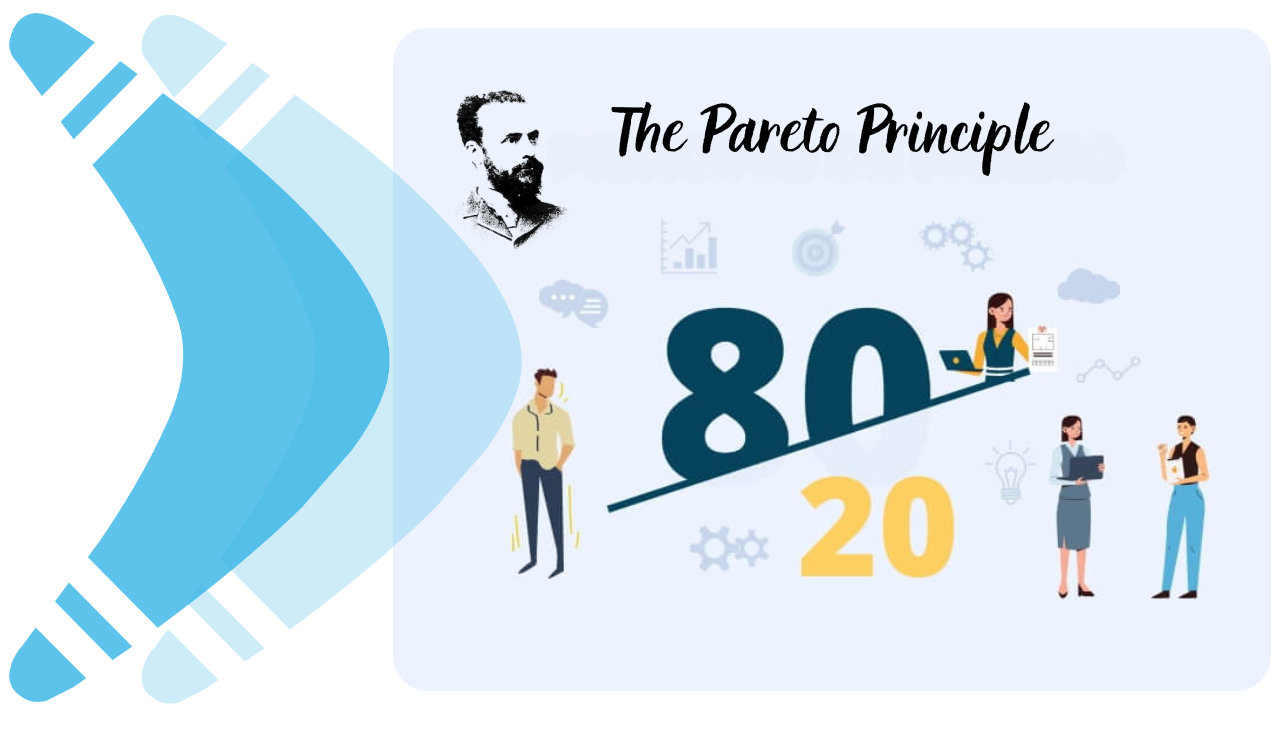The Pareto Principle, also known as the 80-20 rule, is a concept that can be effectively applied in various fields, including customer experience management. Let’s explore how to implement the Pareto Principle in customer experience management:
History of the Pareto Principle
The origins of the Pareto Principle date back to 1906 when Italian economist and sociologist Vilfredo Pareto observed the uneven distribution of income in Italy. He noted that roughly 80% of the wealth was owned by 20% of the population. He then examines studies in other countries and observes a similar distribution.
However, the spread of Pareto’s principle to other areas was achieved 100 years later by Joseph Juran. The Pareto Principle attracts intense attention from economists and business management thinkers. The 80-20 rule, which is adapted first to business life and then to daily life, is frequently applied by those who want to spend their lives more efficiently and effectively.
How Does the Pareto Principle Apply to Customer Experience Management?
In summary, the Pareto principle tells us this in the business world:

20% of the effort we spend affects 80% of the important results. Do not consider 80-20 here as absolute literals. The fact that the ratio of result to effort in a subject is 70-30 or 85-15 does not indicate that the Pareto principle does not work. The important thing is to spend effort on important issues and achieve important results.
Here are a few examples that show the 80-20 principle working.
For example, software giant Microsoft has concluded that “by resolving 20% of the most reported errors, it is possible to prevent 80% of errors and crashes.”
Results have also been observed that in many companies, 80% of revenue comes from 20% of customers.
The Pareto principle can also apply to ordinary issues in our lives.
We wear 20% of our favorite clothes 80% of the time.
We spend 80% of our time with 20% of the people we know.
It is possible to multiply these examples.
The Pareto Effect in Customer Experience Management
Does the Pareto principle work in customer experience management? What can we do to create the Pareto effect?
The Pareto principle is a great way to set our priorities. If you understand that 20% of your effort will yield the best results, you can prioritize which tasks to complete when you feel your best.
This will not only help you prioritize better, but will also help you be less indecisive, overcome mental blocks, and increase the efficiency of your business. The following 4 topics will help you create the Pareto effect.
1- Identify the Most Valuable 20%
Start by analyzing your customer base to identify the top 20% who contribute to 80% of your business. These are often loyal customers who make frequent purchases or advocate for your brand. Prioritize satisfying these customers as they are more likely to make repeat purchases and recommend your business to others.
2- Focus on Critical Issues
In managing customer feedback and improving experiences, focus on addressing the critical issues that impact the majority of your customers. Typically, around 20% of customer feedback will highlight 80% of the significant problems. By addressing these critical issues, you can significantly improve overall customer satisfaction.
3- Allocate Budget Wisely
When allocating resources for customer experience initiatives, prioritize the most impactful areas. Identify the top 20% of initiatives that will deliver 80% of the desired outcomes. Whether it’s investing in training for frontline staff or enhancing digital platforms, ensure that your budget aligns with the most critical aspects of customer experience.
4- Avoid Getting Bogged Down in Details
While attention to detail is essential, avoid spending excessive time on minor aspects of customer experience. For example, when designing surveys, focus on crafting meaningful questions rather than obsessing over design elements. Ensure that the majority of your efforts are directed towards addressing core issues that drive customer satisfaction.
Take the First Step
By applying the Pareto Principle to your customer experience strategy, you can optimize resources and enhance customer satisfaction effectively. Don’t wait for the perfect plan, take the first step now and start seeing positive results. This approach can strengthen your business’s customer-centricity and competitive advantage.
Meet Wiseback
Would you like to review your business’s end-to-end customer experience processes, utilize technology effectively, and propel the customer experience you offer into the future? For more information about Wiseback solutions, feel free to contact us.

